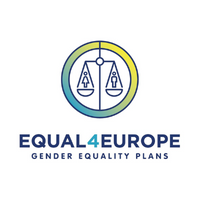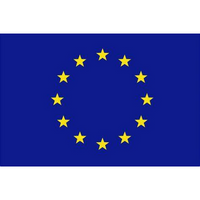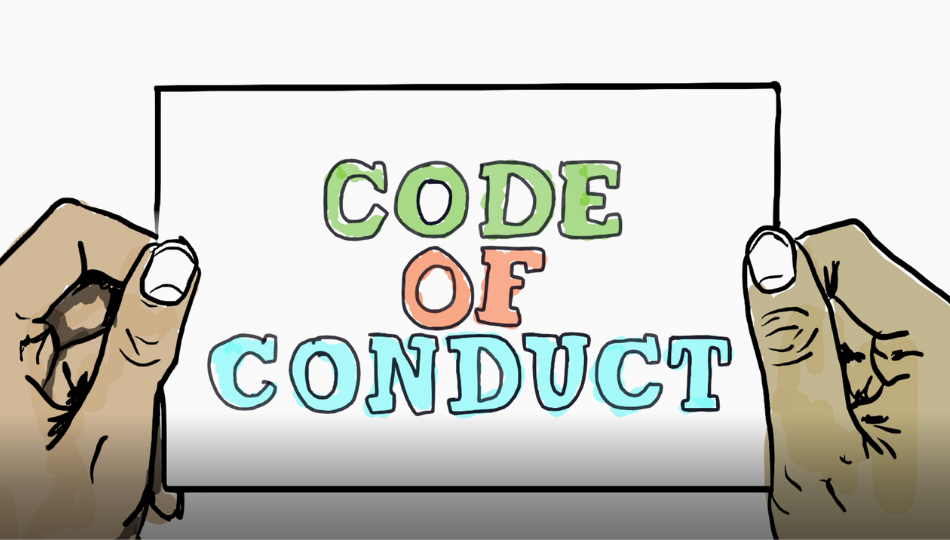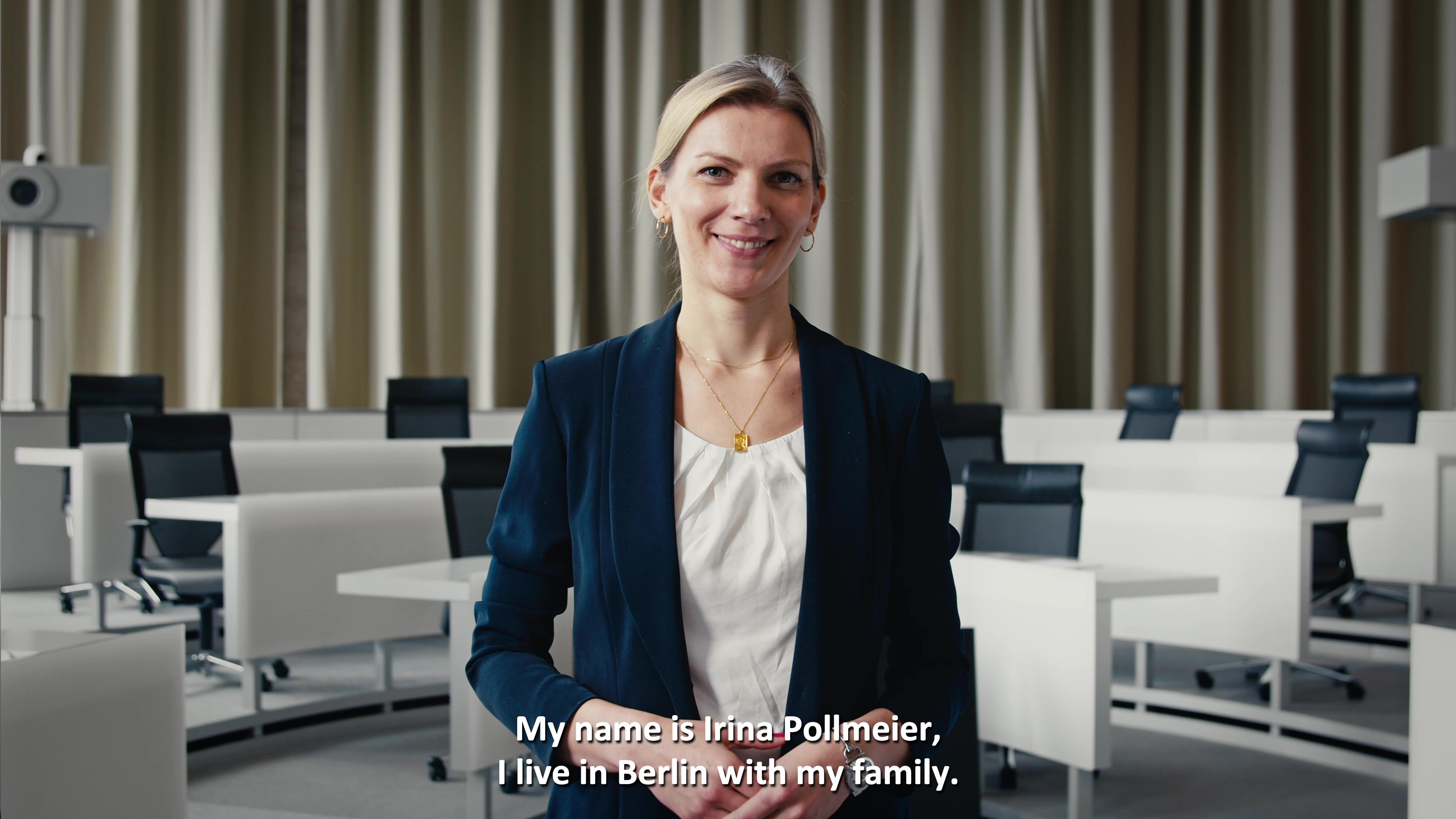
Gender equity
Through the implementation of the ESMT Gender Equality Plan, we are committing to promote gender equality and equity, remove structural and cultural barriers to education and leadership, and support academic staff, non-academic staff, and students to reach their full potential. The GEP has been aligned with the goals and principles of ESMT’s strategic development framework and ASPIRE strategy.
On this page, you will find information about the context in which the ESMT Gender Equality Plan was developed, the specificities of our plan, the initiatives that are currently taking place, how to get involved, and some interesting resources on gender equality that are available in our Information Center and the internet.
Current indicators of gender equality at ESMT
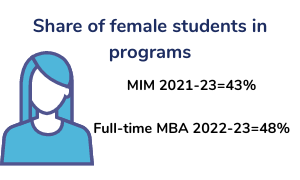
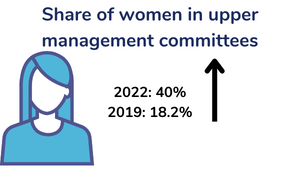
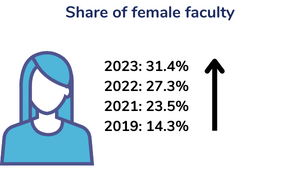
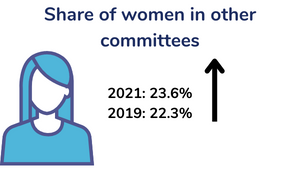
GEP origins
The ESMT Gender Equality Plan (GEP) was developed in the context of the EQUAL4EUROPE project. This project seeks to increase gender equality in six European research institutions from France, Germany, Slovakia, Slovenia, Spain, and The Netherlands. All institutions have a clear focus on arts, humanities, social sciences, business and management, and law (AHMSSBL).
The main objectives of the EQUAL4EUROPE project are to:
- Remove barriers to the recruitment, retention, and career progression of women researchers;
- Address gender imbalances in decision-making processes; and,
- Integrate the gender dimension in research and innovation content.
The project started in January 2020 with a baseline assessment of gender equality issues in each organization. In 2021, organizations developed tailored GEPs. From 2022 until 2024, the focus is on the implementation of these GEPs.
If you want to know more about EQUAL4EUROPE, please click here.
The EQUAL4EUROPE project received funding from the European Union’s Horizon 2020 research and innovation program under grant agreement 872499.
ESMT Gender Equality Plan (GEP)
“Using this plan as a guide, we strive to tap even more deeply into the full potential, qualities, and talents present within the ESMT community.” Prof. Jörg Rocholl, President of ESMT Berlin.
The ESMT Gender Equality Plan (GEP) envisions a working and learning environment where women, men, and gender-diverse people can equally thrive, be recognized, and feel that they belong.
The main goals of the GEP are:
- To ingrain gender equality in the organizational strategy and culture,
- To improve gender parity among faculty and students and in decision-making and advisory bodies, and
- To integrate gender equality in the transfer and production of knowledge.
The GEP contains many different strategies and concrete actions centered around six SMART objectives in the following priority areas: organizational strategy and policies; recruitment of female academics; enrollment of female students to programs; decision-making and advisory bodies; integration of the gender dimension in teaching and research; and sexual harassment and other forms of gender-based violence.
The Equality Committee, a gender-balanced group of six staff members from different departments across ESMT, monitors the implementation of the GEP.
Initiatives
The ESMT Gender Equality Plan (GEP) was launched in April 2022.
The following initiatives have recently begun. Since May we have provided free period products to all students of ESMT, worked with various departments to address gendered language and access in policy and internal documentation, and installed physical suggestion boxes as well as created a virtual suggestion box. Click on the + below to find out more about each initiative.
-
Providing free period products in the school
Boxes have been placed in every women's and gender neutral toilet at ESMT with the purpose of making the school a more inclusive and accessible work and study environment.
Providing free period products means that no one needs to leave work or school early due to an unexpected period. Removing the cost from the products makes them accessible to all, regardless of finances. This initiative addresses the Sustainable Development Goals of empowering women, reducing inequalities and building inclusive institutions.

-
Gender mainstreaming
Policies can impact women, men, and diverse gender people differently. This initiative will seek to better understand the needs, experiences, and interests of all people in the ESMT community and examine the effects that specific policies have on them.
As a gender equity team, we have examined four work-life balance policies so far: sick leave, maternity/parental leave, domiciliary leave, and sick child leave, and their use by different groups.
-
Installation of three suggestion boxes
Three suggestion boxes have been installed throughout ESMT with the purpose of requesting input from students, staff and faculty about the initiatives of the Gender Equality Plan. Every six weeks, a new question will be placed next to the suggestion box, which will prompt ESMT members to respond to topics of gender equality and equity, diversity and inclusion at the school.
The boxes have been placed in front of the Library and Information Centre, in the Student Kitchen on the ground floor in the Learning Centre, and in the Yellow Lounge on the first floor of the administrative building.
The current question is: What diversity, equity, and inclusion events would you like to see at ESMT?
The Gender Equality Officer will check the suggestion boxes regularly and share the input with the Inclusive Leadership Round Table, who will make decisions based on the suggestions.
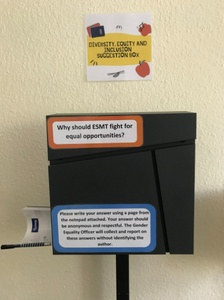
-
Update documentation to use gender-sensitive language
ESMT's compliance officer, Antje Niebuhr, has been working on rewording important internal and external documentation to include gender-sensitive language. Some examples include:
- The Compliance Guideline
- The General Terms and Conditions for Open Programs
- The template for Corporate Program contracts
- The Data Protection Manual
- The Examination Rules
The more people pay attention to gender equality in their language, the more likely the asterisk used in German gender-inclusive writing will be perceived as "normal" and understood for what it is: an expression of our society's progress towards a world in which equality and diversity are respected as integral.
-
Gender in Business case study competition
The Gender in Business ESMT case study competition seeks to encourage the development of teaching case materials that include the gender dimension in the areas of organizational behavior, strategy, economics, finance, management science, or related domains.
The integration of the gender dimension in a case study requires:
- A female protagonist in a leadership position, in a real company, and
- The inclusion of topics that can increase students’ understanding of gender issues in business and organizations.Participants compete to win €2,000 to cover any costs associated with the development or publishing of the case study.
The Gender Equity team is pleased to announce that this year’s winner is Dr. Nora Grasselli.
Dr. Grasselli’s proposal of “Gender dynamics at work” seeks to increase students’ understanding of gender issues in business and organizations through a series of four multimedia cases on gender dynamics. She will develop the material with a “digital first” mindset to be taught through the HUB or Promote. We wish her all the best in this endeavor!
-
Social Impact and Gender competition
In line with the general aim of increasing our understanding of the role of gender in business and management, the ESMT Gender Equality Plan has allocated some funds to engage students in producing knowledge about gender during their Social Impact Projects. The Social Impact Project is a five-week project in the second year of the Masters in Management (MIM) program, in which students serve as economic or management consultants for an organization with specific social impact objectives.
Through the Social Impact and Gender competition, we encourage MIM students to integrate the gender dimension in their project, by:
- Working with a non-profit organization that focuses on issues that affect many women or gender-diverse people, e.g., access to education; access to health; access to justice; gender-based violence. Or,
- Comparing processes and procedures by gender in an organization, e.g., leadership styles; negotiation; occupations. Or,
- Assessing programs or initiatives directed at improving gender diversity within an NGO, e.g., measures for attracting or retaining talent; use of a specific policy. Or,
- Analyzing the impact of a strategy by gender, e.g., marketing campaign.
Students/groups compete to win €1,000.
-
Training staff on Inclusive Practices
A series of three workshops have been developed to increase awareness around inclusive practices such as implicit bias. The first of these workshops was delivered on November 7th.
-
Gender-inclusive bathrooms
Gender-inclusive bathrooms provide a safe and comfortable place for gender-diverse people to use the toilet, as well as fostering an inclusive environment at ESMT. With the support of Facility Management, six gender-inclusive bathrooms were created at ESMT in August 2022.
ESMT research integrates the gender dimension
Integrating the gender dimension into research is one important step towards improving gender equality and creating more inclusive research results. ESMT faculty regularly publish on the topic of business and management - below are some publications that explicitly integrate the gender dimension.
Academic articles
Rua, C. Carnabuci, G. Goosen, M. (Forthcoming). Reaching for the stars: How gender influences the formation of high-status collaboration ties. Academy of Management Journal.
Extant research has shown that it is harder for women than for men to form high-status connections in the workplace. Extending this line of research, we examine how two structural factors – geographic and network proximity – affect men’s and women’s chances of forming high-status connections. Using data on the formation of collaboration ties with star scientists within the R&D laboratories of the forty-two largest pharmaceutical companies between 1985 and 2010, we show that women who are geographically co-located with a “star” colleague are less likely to form a tie with that colleague than male peers who are similarly co-located, and this difference persists irrespective of the star’s gender. Conversely, women benefit more than men do from network proximity, as indicated by the presence of common third-party ties, and this difference widens if the star colleague is also a woman. By illuminating how geographic and network proximity affect the chances of forming high-status connections differently for women than for men, our study goes beyond the notion that women have reduced access to workplace social capital and expands consideration to the structural factors that underpin – amplify or reduce – that disadvantage.
Dahlander, L. Thomas, A. Wallin, W. M. Ångström, C. R. (Forthcoming) Blinded by the person? Experimental evidence from idea evaluation. Strategic Management Journal.
Seeking causal evidence on biases in idea evaluation, we conducted a field experiment in a large multinational company with two conditions: (a) blind evaluation, in which managers received no proposer information, and (b) non-blind evaluation, in which they received the proposer’s name, unit, and location. To our surprise—and in contrast to the pre-registered hypotheses—we found no biases against women and proposers from different units and locations, which blinding could ameliorate. Addressing challenges that remained intractable in the field experiment, we conducted an online experiment, which replicated the null findings. A final vignette study showed that people overestimated the magnitude of the biases. The studies suggest that idea evaluation can be less prone to biases than previously assumed and that evaluators separate
ideas from proposers.
Conference proceedings
Lluent, T. (2022) Befriend thy neighbor: Office seating, social networks, and gender. Academy of Management Proceedings (1).
Within organizations, women remain to this day underrepresented in leadership roles. One key explanation for this focuses on differences in the way men and women socialize at the office and build professional network. Women’s networks are less likely to afford them early access to important and diverse information that would benefit their careers. In this paper, I investigate office spatial design as a managerial lever to shape employee networks, and its differential impact on male and female employees. Further, I study gender differences in the relationship between proximity in an office space, network tie formation, and network brokerage. Seating assignments that closely match the organization’s functional groupings add spatial segregation to the pre-existing occupational segregation between men and women. I argue that breaking functional silos in seating assignments can allow women, to a larger extent than men, to diversify their ties and to access more advantageous network positions. I use data from a quasi-field experiment where the seating plan of a Mexican company’s headquarters was manipulated with the aim to decrease work-interdependence between office neighbors. Following the office reconfiguration, I find that female employees are more likely than male employees to form friendship ties with their new desk neighbors and that women’s friendship networks are more likely to become more brokerage-rich. I also find evidence that women whose networks see an increase of brokerage following the reconfiguration tend to see their wage increase.
Case studies
Bekhazi, L. Schweinsberg, M. Falcao, H. Uhlmann, E. L. (2021). The dual career negotiation (A): Role of Alma. INSEAD Case Study. *2021 EFMD Case Writing Competition 2020: Women in Business*
The Dual Career Negotiation is a two-party, multi-issue role-play based on the true story of a real couple. Alma and Pierre (not their real names) are employed by the same company, Rikoff Projects, a French firm specializing in the design and construction of large-scale infrastructure. When Alma is assigned to a major project in Kuala Lumpur, Pierre seeks a position with Rikoff in Malaysia to support her career progression and enable them to live together. Then her project is cancelled. The company no longer has a job for Alma in Kuala Lumpur, only for Pierre. It can offer her a position in Dubai at a higher rank and higher pay – equivalent to their current earnings combined – but can’t offer Pierre a job there. If they stay in Kuala Lumpur, Alma has no job so their income will be halved. If they move to Dubai, Pierre has no job but Alma’s new salary will almost double what they currently make. The couple need to discuss what to do about their respective careers and their future together.
Grasselli, N. Carnabuci, G. Papachroni, A. (2022). Leading across boundaries: Lucia Fargolo at FoodCo. ESMT Case study.
Lucia Fargolo is a dynamic high potential who joined FoodCo – a global fast moving consumer goods (FMCG) company at the beginning of their digital transformation journey. After a promotion to department head, Lucia is preparing the global Social Media Marketing strategy. The implementation should start be piloted with a few brands. While Lucia is planning for the launch of the pilot with the brand category managers, there is however a hiccup: one seasoned brand manager seems to be totally off-board with Lucia’s plan. He doesn’t even show up for the strategy workshop she organized. What should Lucia do now?
Müller, U. Schäfer, U. Grasselli, N. (2021). Lea Block at Seuzach AG: Initiating digital transformation. ESMT Case study.
Lea Block has tried to initiate digital transformation at Seuzach AG, a large global provider of medical devices for the health care industry. As marketing director, she has identified major shifts in German health care that demand that Seuzach changes its ways of approaching customers. Instead of targeting the specific needs of doctors in hospitals, Seuzach should rather address the new decision makers: the CEOs, CFOs, or CIOs of hospitals, who have a different buying logic. Seuzach should also leap into the future players in the industry through the application of digital innovations which allow for data driven, cloud-based digital services and business models that integrate data across the whole product range. In Seuzach's matrix organization (global product responsibility, supported by regional sales) Lea wants to convince the heads of marketing for the different product businesses to change. She seems to be able to quickly convince her colleagues of what she calls 'digital C-level marketing.' However, as soon as work is supposed to start, she realizes that commitments were less strong than she assumed. A few weeks later, Lea is clearly told that there will be no support for her. The short case study is set when Lea realizes the failure of her digital transformation initiative.
Resources
The European Commission is constantly reflecting on the trends of gender equality in Europe and the measures that could help achieve equality. To understand the European Commission’s current framework towards gender equality, its strategic engagement towards equality, and the 2022 report on gender issues in the EU, visit https://ec.europa.eu/info/policies/justice-and-fundamental-rights/gende….
The European Institute of Gender Equality has produced a comprehensive set of materials on gender equality, that include country specific information, tools, and methods to assess gender issues, and best practices from projects. To know more, visit https://eige.europa.eu.
The EQUAL4EUROPE project has also produced materials to support the development of gender equality plans and toolkits to integrate the gender dimension in research institutions, such as the “Gender inclusive recruitment and selection toolkit for HR professionals”. To check all public deliverables, visit https://equal4europe.eu/research/.
If you are a member of the ESMT community, you can also read the Gender Issues Report 2021 here.
